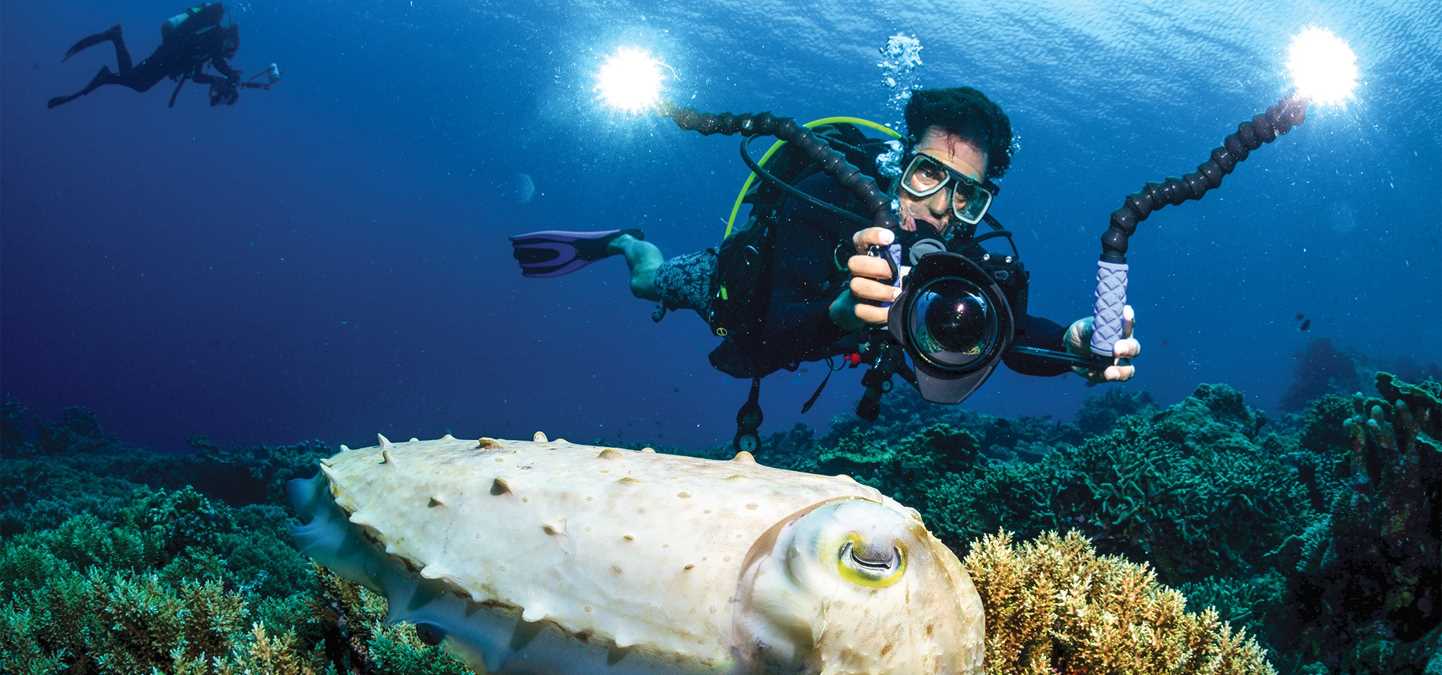Undersea
Undersea Specialists
Nearly every expedition aboard the fleet sails with an undersea specialist who serves as our eyes and ears below the waves, capturing photos and videos and bringing our guests firsthand perspectives of the marine world. Throughout the voyage, they film their dives and manipulate high-definition underwater imaging equipment such as Remotely Operated Vehicles (ROVs) to reveal surprises in the ocean deep—from bright purple corals in Alaska to delicate sea stars in the frigid waters off the Antarctic Peninsula.
Their footage is shown on screens in the lounge during daily recaps, allowing guests to share in the excitement of underwater exploration and get a rare look at marine species in their habitat. In many destinations, they also accompany guests on snorkeling excursions and outings by glass bottom boat to interpret the marine world in real time.
Nearly every expedition aboard the fleet sails with an undersea specialist who serves as our eyes and ears below the waves, capturing photos and videos and bringing our guests firsthand perspectives of the marine world. Throughout the voyage, they film their dives and manipulate high-definition underwater imaging equipment such as Remotely Operated Vehicles (ROVs) to reveal surprises in the ocean deep—from bright purple corals in Alaska to delicate sea stars in the frigid waters off the Antarctic Peninsula. ...
Read more
Meet Our Undersea Specialists
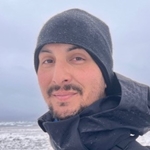
Justin Hofman
Justin started working on expedition ships in 2008 after realizing that his new career in scientific illustration meant too much time inside. He has since worked aboard expedition vessels in numerous countries and filmed wildlife for major production companies in a variety of ecosystems. In 2016, he caught lightning in a bottle when he photographed a tiny seahorse holding onto a pink Q-tip in the blue waters of Indonesia. The image has been seen by millions online and in print. Justin's ability to anticipate animal behavior and compose beautiful images has earned him several awards for his cinematography. Sir David Attenborough has narrated Justin's footage, and his images have been projected on the headquarters of the United Nations. Justin is 1 of 10 people in history to dive in Antarctica's ice-covered Lake Untersee, and the 1st dive team to use technical dive equipment (rebreathers) in the frozen lake. Filming is often isolating and difficult, so Justin splits his time working as a guide on expedition ships where he specializes in marine ecosystems and large-scale ecological processes. He enjoys sharing his enthusiasm and stories with inquisitive travelers and relishes in quiet moments in wild places.

Jason Heilmann
Growing up in northern California, Jason was surrounded by the incomparable nature of the Pacific Northwest. While attending university there, Jason met and eventually married an Ecuadorian woman who happened to be from a small group of islands off the coast of western South America. It was thus that Jason’s path led him to Ecuador and, in time, to one of the most revered natural environments on earth, the Galápagos Islands. Having found his niche in the Galápagos, and eventually becoming a professional SCUBA diver, Jason volunteered as a dive assistant on various scientific projects. Developing his enthusiasm for nature, in 1999 Jason took the only logical course: the Galápagos National Park naturalist program. Interpretation of the Galápagos, whether in the underwater realm or on land, has become a passion with Jason. Eventually he would also work as a naturalist in Alaska and British Columbia. Jason and his family also had the opportunity to take a year-long sabbatical to Sweden to continue their education in ecology and environmental communication. After almost 20 years, Jason still resides on the Galápagos Islands with his wife Graciela and son Matias. He received his Photo Instructor certification in a training workshop in 2010. Developed and taught by National Geographic and Lindblad Expeditions photographers, the workshop equipped him with the insight and skills necessary to help you better understand your camera and the basics of composition—to better capture the moments at the heart of your Lindblad-National Geographic expedition.
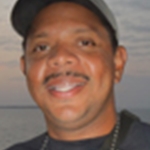
Cristian Moreno
Cristian is a Panamanian born in Chile. He grew up in Panama City until the age of 19 when he returned to Chile to go to college where he received a degree in metallurgic civil engineering. Since 1995 he has been working as a freelance naturalist in Panama. Specializing in bird watching and ecology, he also has a passion for indigenous cultures, hiking and trekking. He is a certified scuba diver and is often found exploring coral reefs along the Caribbean coast of Panama. His love for nature started at the age of 10 when he joined the Pathfinder's Club. Receiving several honors in outdoor activities, ecology, camping and others specialties he grew fond of Panama's natural heritage and was soon guiding relatives and friends through the jungles of his country. His experience is based on several years of guiding groups of different ages and interests. As a naturalist guide and expedition leader he has led groups to all corners of Panama and all along its shores.

Colin McNulty
Colin grew up scuba diving with his family, and fell in love with the ocean at an early age. He has been fortunate to dive in many exotic corners of the world, and to work on a number of undersea research projects studying whale sharks and several deep water fish species. After graduating from the University of Vermont, he began working in various capacities aboard expedition ships. During his travels he photographed and shared his adventures as a way of making remote areas and cultures more accessible. It was in Santa Barbara, California that he learned how to photograph underwater, and combined two of his great passions, photography and the sea. Exploring and documenting the vast richness, diversity, and beauty of the underwater world continues to be a lifelong endeavor. Colin has explored many remote destinations aboard expedition ships and icebreakers. He has lead expeditions throughout both polar regions including excursions to the North Pole. His work has also brought him to South East Asia, the Amazon, Seychelles, the Russian Far East, the South Pacific, Micronesia, the Canadian and Russian Arctic, Svalbard and Greenland. Colin also worked on a small crew filming brown bears in Halo Bay, Katmai National Park. The team spent eight weeks living among the bears, capturing their majestic beauty as they explored, fed, played, fought, and interacted with each other. Colin's thirst for adventure, love of the natural world, and devotion to the sea is evident as he strives to find new ways to bring the natural world into the hearts and minds of those around him.

Chris Cook
A self confessed “animal nerd,” Chris falls under many titles: marine biologist, marine interpreter, dive master, science communicator, and naturalist. Chris was lucky enough to grow up on the East Coast of Australia, where there are no shortage of different coastal environments to explore. While growing up, his friends would be surfing while he would be under the waves, snorkel and mask on looking for fish and all the weird and wonderful creatures he couldn’t get enough of. This love of the ocean lead to him completing a Bachelor of Science in 2005. His passion for the ocean and connecting people with its inhabitants landed him in various roles in different zoos and aquariums, but it was the "wild" that was always Chris’s true calling. After working as a whale watching tour guide off the West Coast of Canada and moving back to Australia to work on the Great Barrier Reef, Chris never looked back. Since 2009 Chris’s specialty has been giving presentations on and taking people out to tropical environments, in particular to different parts of the Great Barrier Reef region. In recent years Chris has spent more time living on tropical islands or on ships cruising up and down the reef than on land. Chris’s passion for photography, nature’s creatures, and scuba diving has taken him from diving in the snow in Canada one week to diving in Mexico the next. He has followed his passion to develop his photography and interpretative skills through out Southeast Asia, all along the East Coast of Australia and to the magical Kimberley region off the west coast. The only passions of Chris’s not mentioned are reptiles, birds, insects, dogs, the entire macro world, and of course talking about all of the above over good coffee!
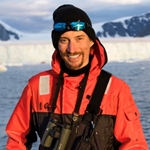
James Hyde
Pacific Northwest born James Hyde grew up immersed in the Salish Sea, on Vashon Island with Seattle as his backdrop. A passionate traveler from a young age, James explored four continents before finishing his degree at Western Washington University's Huxley College of the Environment. A transformative visit to Australia's Great Barrier Reef sparked his fascination with marine life, particularly underwater ecology and scuba diving. This passion led him to a Seattle dive shop, and a local independent middle school where he shared his love for the ocean with the students and assisted with the Travel Study program, thus beginning his journey toward expedition travel. In 2016, a childhood friend introduced James to Lindblad Expeditions, where he began as a Dive Buddy. Over the years, he expanded his role across the fleet, learning from each environment and the diverse ecosystems the ships explored. Eventually, he became an Undersea Specialist, a role that deepened his love for the ocean and his commitment to conservation. James is passionate about inspiring others to care for the unique ecosystems thriving in protected waters and advancing Lindblad's contributions to scientific research. Whether it's monitoring ocean plastics or engaging in citizen science projects, James is dedicated to furthering marine conservation efforts in partnership with leading universities and research institutes worldwide.
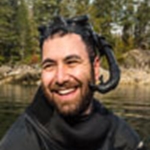
Kayvon Malek
Kayvon Malek is an underwater videographer whose work as an expedition guide and in the wildlife documentary industry have taken him pole to pole. After taking a scuba course on a whim in college, Kayvon’s newfound obsession led him to working as a research diver and then to the Monterey Bay Aquarium as a diver and presenter. It was there that he found his love of sharing the oceans with visitors and began documenting his local subtidal world for any and all to see. Now this passion has taken him across the world to some of the most productive cold water environments on the planet. From Alaska to Norway, and down to the Antarctic Peninsula, Kayvon documents these hidden marine worlds to show to guests aboard polar expedition ships. When not working in the expedition industry Kayvon also works in the wildlife documentary filmmaking world- having worked TV series such as Our Great National Parks for Netflix and Incredible Animal Journeys for Disney+. He cherishes the opportunity to bring the natural world into the homes of people everywhere, so they too can fall in love with the oceans and discover a beautiful world that is more threatened than ever. When not traveling for work, Kayvon can often be found in the kelp forests of his home in the Monterey Bay, perhaps making new pinniped friends, having staring competitions with rockfish, or out on an easter egg hunt for colorful nudibranchs.
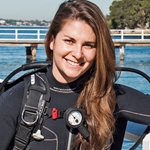
Maya Santangelo
Maya was born and raised in Southern California, where her curiosity for the natural world was encouraged from an early age. Relocating to Sydney, Australia with her family at 11 years old, she learned to scuba dive, eventually becoming a PADI Instructor. Her fascination for the underwater world undoubtedly fueled her interest to study marine biology at James Cook University. Working as a professional guide in some of the world’s top dive destinations, including Palau and Mexico’s Guadalupe Island and Revillagigedo Archipelago, Maya realized a passion for sharing her love for the ocean with others, and the value of citizen science in the dive industry. In 2016, Maya was awarded the Rolex Scholarship for Australasia by the Our World-Underwater Scholarship Society. Diving around the world for a year to work alongside leaders in dive expeditions, marine research and conservation, her experiences as a Rolex Scholar proved to be formative in cementing her passions and future career directions to make a difference for our blue planet. With an underlying drive to explore and understand life in the ocean, Maya’s aquatic endeavors have seen her diving and working on projects in a variety of marine environments across all seven continents. Whether counting the arms of giant sea stars in Antarctica, or identifying manta rays in French Polynesia, Maya is happiest when underwater. As part of the Lindblad Expeditions team, Maya looks forward to each dive as a new opportunity to share what would otherwise be out of sight-out of mind, and contribute to conservation through science, communication and education.

Christine West
Christine is an Explorer's Club Fellow, Polar Expedition Diver, Expedition Leader and conservation photographer and videographer. She has worked as a professional diver around the world for over 18 years dedicated to ocean education, exploration and safety. Christine proudly became a USCG certified 100-ton Captain in 2017. She now spends over six months per year in the field documenting and sharing stories about places that are rarely seen and yet are rapidly changing due to the warming of the Earth such as the High Canadian Arctic and Antarctica. Christine uses a variety of tools such as underwater cameras, drones and ROVs to create imagery that serve as voices for ecosystems that need immediate protection. It is important to her to not only document species presence and abundance, but to share their stories and behaviors in a memorable way that drives wider audiences, including inland communities, to care about places that may not be in their backyard but to which they influence and are connected. Christine's passion to share the lesser-known stories continually pushes her to dive the coldest, sometimes murkiest, most remote areas on the planet. Christine was fortunate to grow up in the Pacific Northwest along the shores of the Puget Sound. However, she has called the Big Island of Hawaii home since 2014 and plans to continue building her future with her husband there.
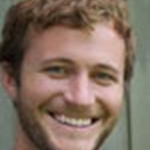
Brett Garner
Brett is a photographer, marine biologist, and educator from California. He is happiest underwater with camera in hand working to inspire marine conservation. He has worked and traveled extensively throughout the Americas, Asia, Oceania, and the Middle East. His underwater work has taken him under the ice in Alaska and also through some of the world’s warmest seas. He earned his undergraduate degree from UCLA in marine biology and his master’s from Scripps Institution of Oceanography in marine biology and conservation. While at Scripps, Brett received a Rapid Ocean Conservation Grant from the Waitt Foundation to produce the multimedia project, Kia Over There , which follows a group of Fijian spear-fishermen and exposes the challenges they face to protect their reef. He followed this work with projects featuring traditional landowners in the Peruvian Amazon and nomadic fishermen in Malaysian Borneo. During the 2017 bleaching event on the Great Barrier Reef, Brett was on site documenting the changes daily. His work has been featured in publications including the New York Times , the BBC , the Sydney Morning Herald , and the Outdoor Journal. He lives on the coast in Western Australia where he can enjoy the ocean even when he isn’t working.
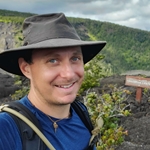
Adam Maire
Explorers Club Member, Polar Expedition Diver, Naturalist, and Historian, Adam Maire is dedicated to exploring around the globe with a goal of researching, documenting, and teaching others about the beauty, the power and the importance of the earth's wild places. With degrees in Animal Science, History and a Scuba Diving Instructor certification, he is passionate about finding extraordinary ways to help others understand the links between the worlds that exist both above and below the surface of the ocean. Growing up working outside on a cattle ranch in Nebraska, Adam's love for nature started early in life. Through college he continued to learn about the natural world and sought out jobs that aided in his thirst for knowledge. After college, he joined the U.S. Army where he served as a Team Leader in an Airborne Infantry unit. After leaving the military, Adam began documenting the underwater world through photography and videography from the Arctic Ocean all the way to Antarctica and many places in between. Spending 6 months per year in the field, he works to educate people about these remote places and the important impact they have at a global level. Every part of this earth is connected through the five oceans. Adam currently lives in Hawaii with his wife where they are both pursuing master's degrees in marine biology with a hope to focus their research on issues impacting both the Arctic and Antarctica underwater. In his free time, Adam volunteers with the non-profit Project Recover with a mission to find and repatriate the remains of missing American Service members.

Gail Ashton
With a bachelor's degree in Marine Biology and Biological Oceanography from Swansea University, Wales, and a Ph.D. in Marine Ecology from the University of Aberdeen, Scotland, Gail is dedicated to investigating marine biodiversity and exploring the world. As a PADI Dive Master, she has completed over 500 research dives, many under the ice in Antarctica. Gail has worked as a research scientist and post-doctoral fellow at the Smithsonian and the British Antarctic Survey. She spent over 18 months living and working at the Rother Research Station in Antarctica. Her research has focused on species acclimation, biodiversity on artificial structures, the transfer of organisms by boats, invasive species control, and the effects of ocean warming on marine species. Her publication, "Predator control of marine communities increases with temperature across 115 degrees of latitude," appeared in the June 2022 issue of Science. Gail's research has taken her to diverse locations, including the Aleutian Islands, Antarctica, the Coco Islands, the Galapagos, Guam, Indonesia, Panama, and many other places. As an accomplished researcher and environmentalist, Gail is passionate about sharing her knowledge and enthusiasm for the world's marine communities. She believes that while many sea creatures are found worldwide, the unique diversity of species in each location makes every place distinct and exciting.
Showing 12 of 29

